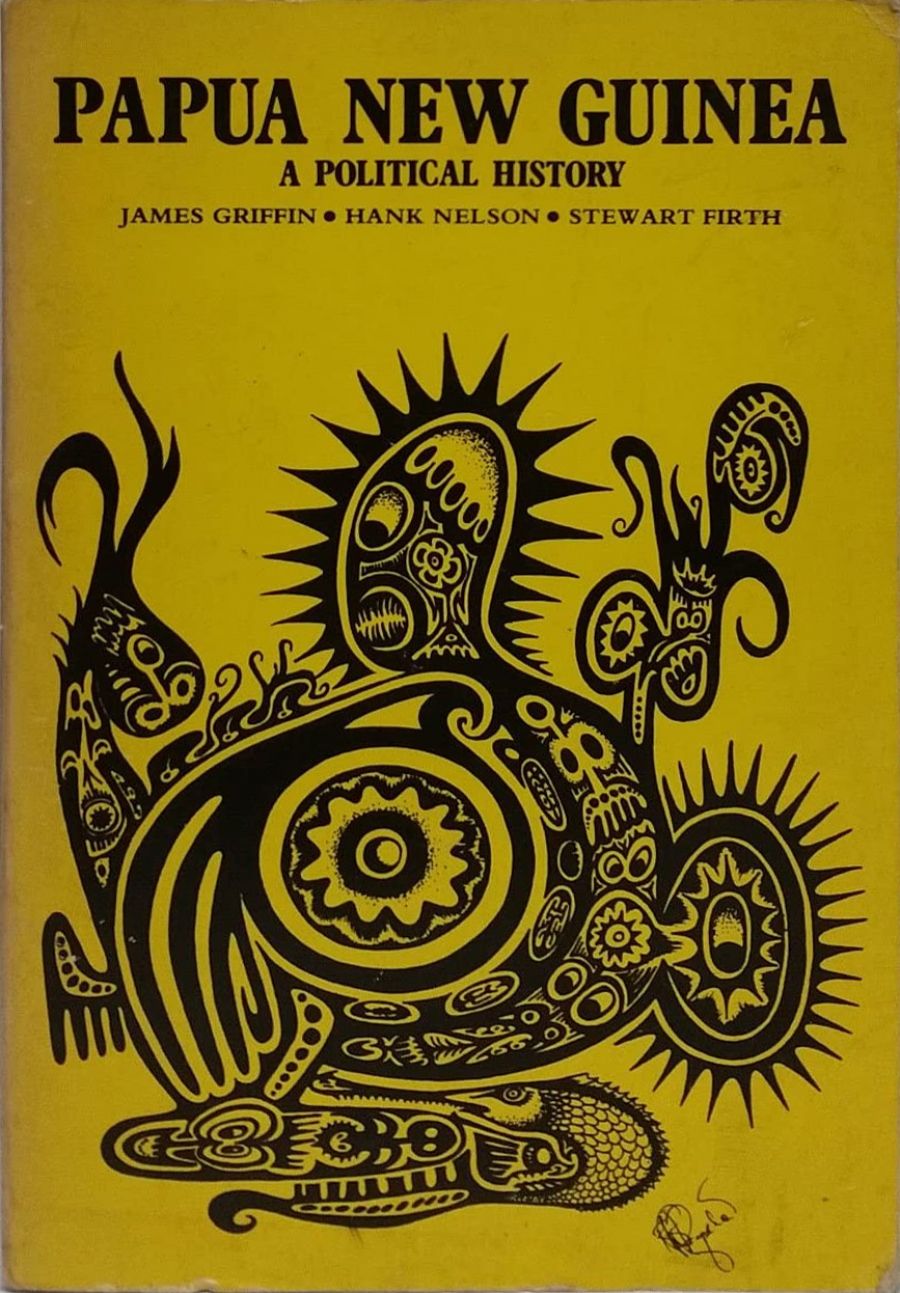
- Free Article: No
- Contents Category: Politics
- Review Article: Yes
- Article Title: Scholarly view to the north
- Online Only: No
- Custom Highlight Text: In 1606, Prado abducted fourteen Mailu children to Madrid, where they were baptized. The islanders, we read in Papua New Guinea: A Political History:
- Book 1 Title: Papua New Guinea: A Political History
- Book 1 Biblio: Heinemann $17.50 hb, $8.95 pb, 280 pp
Of the many books pertaining to Papua New Guinea, only Gavin Souter’s journalistic New Guinea, The Last Unknown (1963) and P. Biskup, B. Jinks, and H. Nelson, A Short History of New Guinea (1968), written for junior high school students, give an historical overview from the first arrival of humans to the present. Papua New Guinea: A Political History is the first concise and searching account.
From beginning to end, here is evidence of fine scholarship. The choice of quotes, such as from F. West (ed.), Selected Letters of Hubert Murray (1970):
Australian administration of German New Guinea is not very encouraging – the same old flogging seems to go on, with the same old imprisonment in dark rooms without trial, and all the paraphernalia of the old German regime …
from Administrator J.K. Murray’s 1947 John Murtagh Macrossan Memorial Lecture:
The interested and ignoble doctrines of racialism which have penetrated deeply into the life of New Guinea and constitute an irrational obstacle to its future progress, can only be expelled by showing that a liberal and humane economic policy works when it is backed by knowledge and skill …
and from what Foreign Minister Maori Kiki told the UN in 1977 apropos Idi Amin:
We cannot accuse others of inhuman policy if our own actions at home are repressive … We cannot protest the racist actions of white-controlled African governments, if our own attitudes are equally at fault…
has clearly been made after most careful deliberation, and the chapters unfold in a way that partly explains the observations in chapter thirteen, ‘Independence and the Future’.
Why the ‘partly’ Well, there is only one disciplined party in the National Parliament today, namely the People’s Progress Party, and whoever forms government has to contend with a lack of ideology and/or nation-consciousness among most of the 109 members who, like very many of their constituents, see Parliament as an eleemosynary institution, not as the main forum for voicing national aspirations and initiating actions to fulfil them. Thanks to the exceptional political nous and charisma of Michael Somare, the nation’s first prime minister, the novel and cumbersome machine of democratic government has chugged along, making fair progress even though some of its crew were inexperienced or less than diligent. Now that Mr Somare is no longer at the helm and the first flush of independence has well and truly gone, no one but the blissfully ignorant forecasts the nation’s future.
The last three chapters, ‘Ambiguity and Liberation 1968-72’, ‘Achieving Independence 1972-1975’, and ‘Independence and the Future’, are sure to evoke most interest. They cover those years very well, with the extra bonus of an excellent close up of Bougainvillean secessionism and the concomitant North Solomons Provincial Government which, thanks to its share of mining royalties, has very much greater financial resources than other provincial governments. Most of the nineteen provincial governments are inefficient and corrupt, posing a serious problem to Sir Julius Chan’s government. The replacement of provincial governments by three regional governments is under consideration.
The last chapter contains descriptions of the current situation and some future options in foreign relations, trade, internal security and defence, and, of course, of ‘the political model’. (I must confess to being unable to classify Papua New Guinea’s form of government, even though ‘Westminster’ was on everyone s lips when the constitutional planning committee and the makers of the constitution went about their tasks).
Style and expression of the first three chapters, ‘Settlement and Change’ – with the delightful verity that ‘archaeologists views about the life of Man in prehistoric Papua New Guinea change from year to year as fresh evidence is dug from the ground’ – ‘British New Guinea 1884–1906’, and ‘Australian Papua 1906-1942’, are of superb simplicity. Not a phrase or word will be lost to anyone whose mother tongue is other than English. The other chapters are not as easy to follow but have sufficient fluidity to prevent reading from becoming a chore. The omission of footnotes, sources being given at the end of each chapter, helps, too. All this needs mentioning because most Papua New Guineans who come across a review of a book about their country and then get hold of that book are put off by thesaurus gymnastics and academic jargon.
James Griffin, Hank Nelson, and Stewart Firth, who have shared the writing of this book, are among the best historians of Papua New Guinea, they have taught in that country and belong or have belonged to the world-renowned ANU Research School of Pacific Studies. Their achievement, a tour de force in the matter of reducing a huge mass of relevant information to one concise volume, will probably find little favour with those who wax lyrical over Australia’s activities in the islands, and it will certainly be scorned by academic knights riding for the Third World on a Marxist charger. What really does matter is, of course, how Paupa New Guineans assess this book, because, unless I am mistaken, Papua New Guinea: A Political History is specially meant to be read by them.
Let’s hear from you, John Waiko, Willington Opeba Jojoga, Rabbie Namaliu, and the rest.


Comments powered by CComment